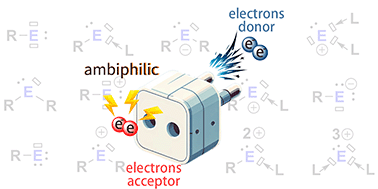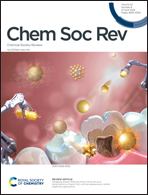Recent advances in the chemistry of isolable carbene analogues with group 13–15 elements
Abstract
Carbenes (R2C:), compounds with a divalent carbon atom containing only six valence shell electrons, have evolved into a broader class with the replacement of the carbene carbon or the RC moiety with main group elements, leading to the creation of main group carbene analogues. These analogues, mirroring the electronic structure of carbenes (a lone pair of electrons and an empty orbital), demonstrate unique reactivity. Over the last three decades, this area has seen substantial advancements, paralleling the innovations in carbene chemistry. Recent studies have revealed a spectrum of unique carbene analogues, such as monocoordinate aluminylenes, nitrenes, and bismuthinidenes, notable for their extraordinary properties and diverse reactivity, offering promising applications in small molecule activation. This review delves into the isolable main group carbene analogues that are in the forefront from 2010 and beyond, spanning elements from group 13 (B, Al, Ga, In, and Tl), group 14 (Si, Ge, Sn, and Pb) and group 15 (N, P, As, Sb, and Bi). Specifically, this review focuses on the potential amphiphilic species that possess both lone pairs of electrons and vacant orbitals. We detail their comprehensive synthesis and stabilization strategies, outlining the reactivity arising from their distinct structural characteristics.

- This article is part of the themed collection: Applications of Main Group Chemistry in Synthesis, Catalysis, and Biomedical and Materials Research


 Please wait while we load your content...
Please wait while we load your content...